 |
| The Independent Traveler's Newsletter PAGE FIVE |
 |
| The Independent Traveler's Newsletter PAGE FIVE |
| LA GRANDE ARCHE DE LA DEFENSE - Fairytale or Nightmare? |
|
by Arthur Gillette
Badly hit by the economic crisis of the 1930s and the disastrous human effects of World War II, some 14,000 people – mainly immigrants - 'lived' there and nearby during the 1950s in metal-clad shacks, and it was called bidonville (tin can town). Long ignored, this material and human blemish came to be considered shameful towards the end of the 1960s. Then, during the successive presidencies of Georges Pompidou and Valéry Giscard d’Estaing, a project began to emerge to turn La Défense into a major business hub housed in stunningly modern architecture. Elected in 1981, President François Mitterrand brought the idea to fruition. The proposal of two Danish builders, architect Johann Otto von Spreckelsen* and Erik Reitzel to build a huge arch as the new quarter's centerpiece, was selected and construction began in earnest in 1985. Although partly inspired by Napoleon I's Arch of Triumph, the Défense span was not meant to commemorate military prowess but, rather, to celebrate humanitarian principles and goals. Its geographical position was also chosen as the 20th century extension/completion of the eastern end of Paris’ 'historical axis' running longitudinally from the Bastille to the Louvre, through the Tuileries Gardens and the Place de la Concorde with its obelisk, then up the Champs Elysées to the Étoile/Arc de Triomphe. Construction continued quite rapidly for a structure of this size, and two workers died in the rush. Inauguration took place in 1989, the bicentenary of the French Revolution and its historic Declaration of Human Rights and Citizens’ Rights – not to forget the centenary of the Eiffel Tower. Speaking of which, and although the Arch is huge enough to bestride Notre Dame Cathedral (!), it is only one-third as tall as Gustave Eiffel's lacy steel tower. 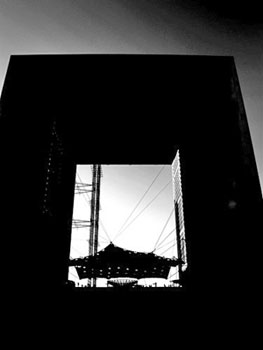 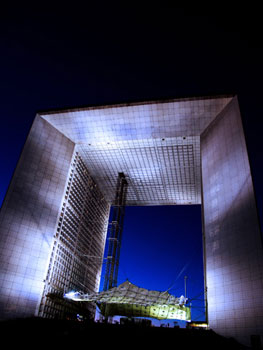
These two dramatic photos of La Grand Arche were taken by Canadian photographer Clive Branson. The Grande Arche has been a tremendous commercial success: taken together its 650 (sic!) enterprises have an annual turnover greater than the national economies of Greece or Austria. And as a tourist attraction, it drew annually 250,000 visitors, the largest tourist magnet in the Hauts-de-Seine département. I wrote 'drew' in the past tense because, following a breakdown of its huge panoramic elevators, it was temporarily closed to the public in April 2010. Since, however, the closure has been made permanent. Viewed, for example, from atop the Eiffel Tower, the Grande Arche and its neighboring and resolutely modern skyscrapers look like Manhattan. For some, this is a kind of architectural fairytale, a step forward to bringing Paris well into the 21st century. Others, who may nevertheless accept the architecture, consider the Défense Quarter to be inhuman – it is said to 'boast' the city's highest suicide rate. But, they are relieved that its nightmarish qualities did not invade central Paris. And it was just such an aggression that was proposed in 1925 by the Swiss architect/urbanist Le Corbusier. His plan called for 18 faceless skyscrapers around the Champs Elysées housing more than half a million people – all in the name of 'rational modernity'. For an inkling of the nightmare Paris was spared, visit http://delassus.unblog.fr/le-corbusier-projets-de-ville-dans-lentre-deux-guerres/. Whew! [* Unfortunately,
the Danish architect died two years before it was completed
If you
are heading for Paris any time soon, don't forget Arthur's Paris
Through The Ages Strolls
Abut the
photographer, Clive Branson: Clive
graduated in photography from New York City's Parsons School of Design.
FIRST ANNUAL PHOTOS OF
FRANCE CONTEST
Thanks go out to all who took the time to enter our photo contest. We are looking forward to our readers will selecting the winning photos from the twelve we have chosen. We chose the final photos without any information about the photographer and from the many dozens we received. We were looking specifically for photographs that truly represented France in addition to be good compositions and of good quality. Each photo is presented here anonymously, but if you mouse over them you can read subject of the photo. We would like you to take your time and look at each one. To see the enlarged version of each photo, simply click on the small pictures below. Use your browser's back arrow to return to this page. Perhaps you will select a photo that reminds you of your own vacation in France, or maybe you'll choose one because it's simply a great photo. Whatever your reason, the winner is now up to you! When you've decided which one is your favorite, click on our email address at the bottom, and put the number of the photo in the subject line. Don't bother to send us a message; just type Photo and the number (example: Photo Thirteen) and hit send. That will make it easy for us to tally the results. All votes must be in by April 15, and the winner, along with the photographer's name and description of the photo will appear in our Spring newsletter. The winning photographer will receive a one-year subscription to France Magazine, the highly-acclaimed, glossy magazine published by the French-American Cultural Foundation supporting initiatives and exchanges between France and the United States and located in Washington DC. This is a $25 to $30 value. The
simple voting rule is one vote per person, so study them all and
choose
your favorite.
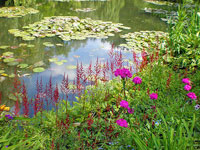 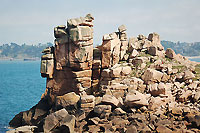 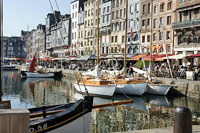 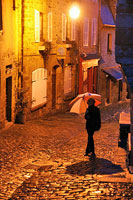
Five Six Seven Eight Submit your vote by clicking here: publisher@franceonyourown.com, enter the number (example: Photo Thirteen) in the subject line of your email, and click Send. Once again, we appreciate all of our readers who took the time to enter our contest. The photos we received were all wonderful. Now it's time to vote!
|